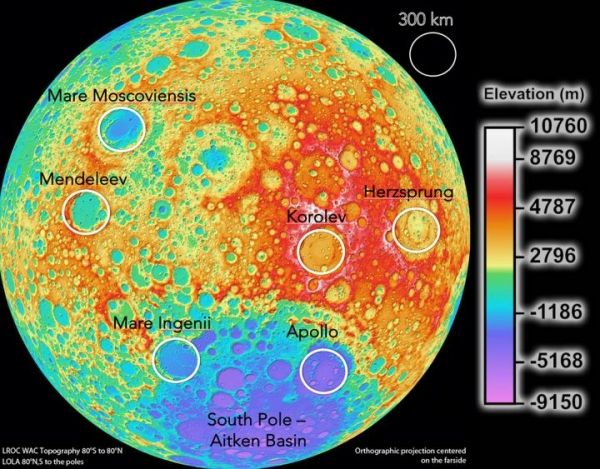An international team of scientists led by the Center for Astrophysics | Harvard & Smithsonian, has identified a problem with the growing interest in extractable resources on the moon: there aren’t enough of them to go around. With no international policies or agreements to decide "who gets what from where," scientists believe tensions, overcrowding, and quick exhaustion of resources to be one possible future for moon mining projects. The paper published today in the Philosophical Transactions of the Royal Society A.
"A lot of people think of space as a place of peace and harmony between nations. The problem is there's no law to regulate who gets to use the resources, and there are a significant number of space agencies and others in the private sector that aim to land on the moon within the next five years," said Martin Elvis, astronomer at the Center for Astrophysics | Harvard & Smithsonian and the lead author on the paper. "We looked at all the maps of the Moon we could find and found that not very many places had resources of interest, and those that did were very small. That creates a lot of room for conflict over certain resources."
Resources like water and iron are important because they will enable future research to be conducted on, and launched from, the moon. "You don't want to bring resources for mission support from Earth, you'd much rather get them from the Moon. Iron is important if you want to build anything on the moon; it would be absurdly expensive to transport iron to the moon," said Elvis. "You need water to survive; you need it to grow food—you don't bring your salad with you from Earth—and to split into oxygen to breathe and hydrogen for fuel."
Read more at: Harvard-Smithsonian Center for Astrophysics
Taken by NASA's Lunar Reconnaissance Orbiter, this image of the moon is part of the collection of the highest resolution, near-global topographic maps of the moon ever created. Overlaid on this image are some of the hotspots identified for cosmology telescopes on the moon; few ideal locations for these telescopes exist on the moon, as others conflict with the radio quiet zone. (Photo Credit: NASA/Goddard Space Flight Center/DLR/ASU; Overlay: M. Elvis, A. Krosilowski, T. Milligan)


